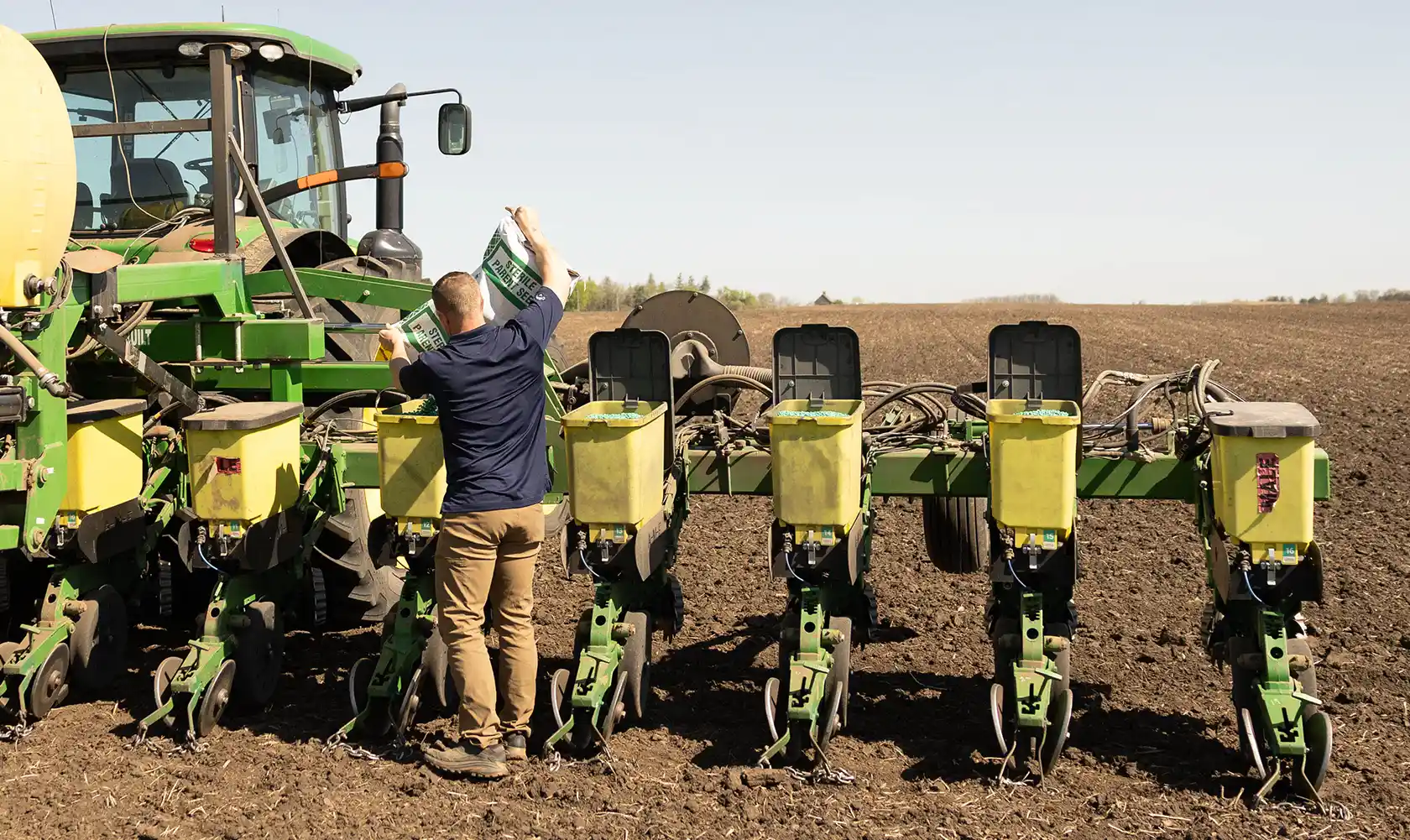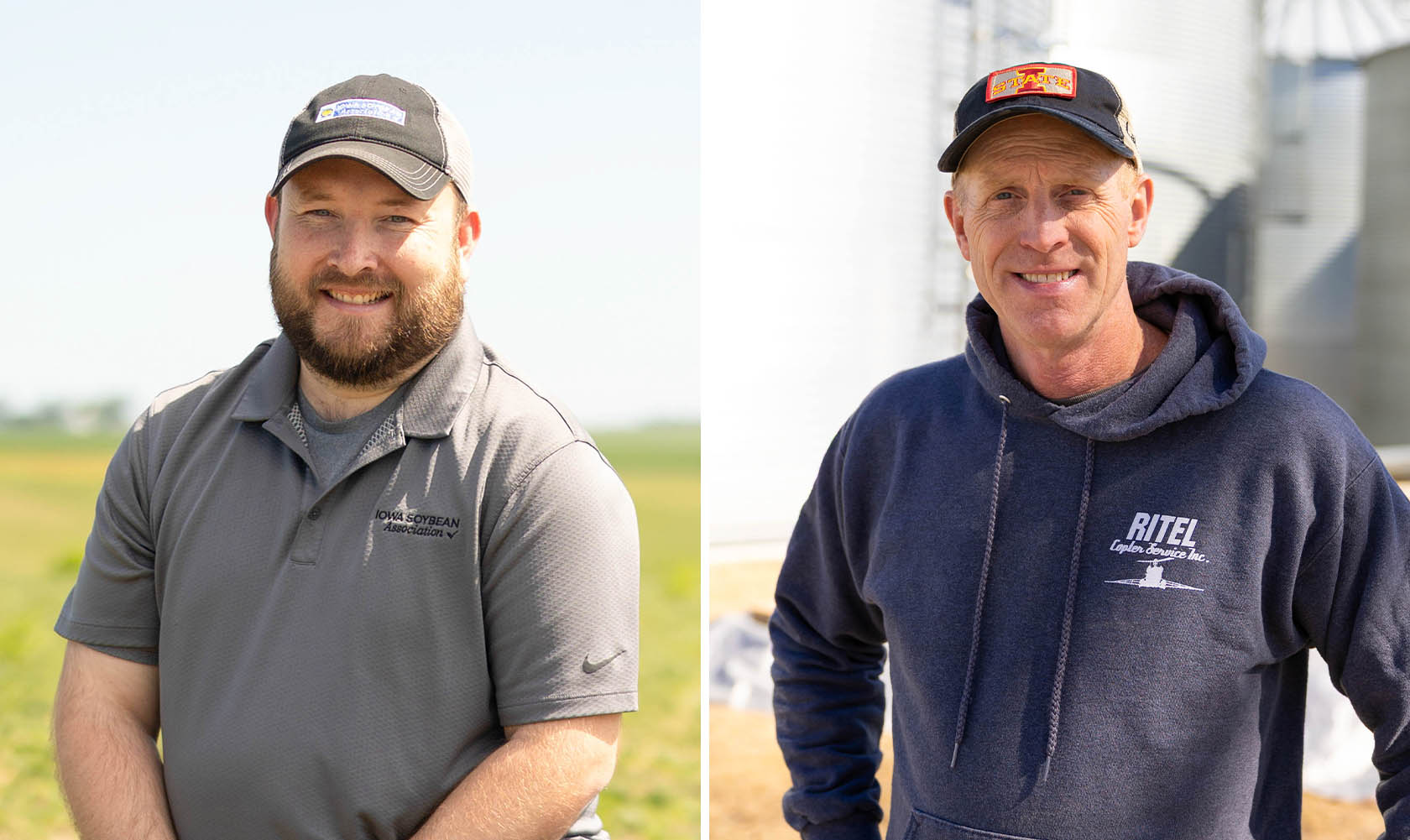
(Photo: Iowa Soybean Association / Joclyn Kuboushek)
Five considerations for soybean seed selection
July 31, 2025 | Kriss Nelson
From unpredictable weather to relentless weeds, insects and disease, every growing season brings its own set of challenges. But the strongest line of defense starts long before the planter hits the field: it starts with seed selection.
As the early order window creeps up, it's time to think ahead and secure genetics that can withstand whatever
the 2026 growing season throws our way.
Iowa Soybean Association (ISA) Research Agronomist Shane Beck and ISA farmer-member Matt Wyatt, a Latham and LG Seeds salesman, share their five key considerations to guide your soybean seed decisions for next year.

1: Pest Protection
Soybean yields suffer significantly from weeds and insects, which compete for resources and directly harm plants. Choosing seeds with built-in protection helps safeguard yield from these threats.
Choosing hybrids and varieties that fit into a well-balanced chemical program for weed control is essential.
"Don't use the same herbicides for both corn and soybeans," says Beck. "Unfortunately, soybeans have a limited number of herbicides that are effective against post-emergent weeds, so to help maintain the effectiveness of these chemicals, it is best not to use them in corn as well. It is better to use different herbicides and modes of action to manage the weeds during corn years of rotation."
Some examples include the use of 2,4-D and Glufosinate in both corn and soybeans. According to Beck, this can lead to the development of early resistance to those herbicides.
For above-ground insect and herbicide tolerance in corn following soybeans, Wyatt advises traits with DoublePro or PowerCore to provide above-ground insect protection and herbicide tolerance. In corn-on-corn situations, farmers may consider a SmartStax or SmartStax Pro, which is designed to provide broad-spectrum insect protection, including both above-ground and below-ground pests, as well as herbicide tolerance.
For soybeans, Wyatt looks for traits with XtendFlex or Enlist traits which provide advanced weed control through herbicide tolerance.
2: Maturity
Maturity is an important factor to consider when purchasing seed.
"Full-season maturities offer the most upside when it comes to yield potential, but there is also a risk of an early frost killing the soybean plant before it is fully mature, resulting in a loss of yield," says Beck. "Having a range in maturities can help spread out this risk."
There can also be an advantage to planting an earlier variety, especially if cover crops are part of your operation, Beck says, allowing for early fall soybean harvest to give the cover crops a head start on growth going into winter.
Where you farm and how early you want to plant and harvest will help decide which maturity group to use.
Wyatt, who farms near Reinbeck, says soybean farmers in his area plant a range of 1.8 to 3.0 maturity, depending on when they want to harvest.
"It seems the later maturity soybean, the better results," says Wyatt. "As long as you get the right weather, the later the maturity, the better the yield potential."
Wyatt says they aim for 102- to 114-day maturity corn. This allows farmers to spread out the timing for when their corn is ready for harvest.
"Spreading out corn maturities can also be beneficial because it can spread out the pollination window, which can help mitigate the risk of a hot week during pollination where the corn might not pollinate as well as we would like, thereby reducing yield," says Beck.
3: Defense
Some varieties of corn and soybeans offer a tougher defense against diseases.
"Seed companies test their products against common diseases in the area and give them a rating on how well they protect against those diseases," says Beck. "Knowing what diseases are common in your field can help when choosing a hybrid or variety best suited to deal with that pest."
Consider each field individually; its history will guide the best course of action.
"If you have had a disease on your farm in the past, you want to plant a variety that shows tolerance to that disease," says Wyatt. "Tar spot in corn, for example, there seem to be some numbers that are showing resistance, then there are others that are very susceptible to it."
Some soybean varieties, Beck says, are also better suited to do well in the presence of nematodes or a nutrient deficiency like Iron Deficiency Chlorosis.
4: Emergence
According to Wyatt, the practice of planting soybeans before or with corn is gaining traction. To secure replanting coverage, most farmers adhere to the federal crop insurance deadlines.
"This year, crusting soils caused some replanting, but more people seem to take that risk to get the highest potential for yield by planting as early as possible," says Wyatt.
Choosing a seed variety and hybrid that emerges well under stressful and cooler conditions for planting early is important, but that might not be enough.
5: Consistent yielding varieties
Knowing where your higher- and lower-performing fields are will help you choose a variety that consistently yields.
"Different seed genetics perform differently in different environments," Beck says. "Some will do well in sandy, poorer-performing soils, but not as well on the better soil."
Farmers shouldn't focus on varieties that yield the highest in only a single year or perform well in only specific locations, Wyatt says.
"You should consider looking for a variety that is consistently toward the top of yield trials in your area," he advises.
Seed companies replace hybrids and varieties quickly, which means a variety that has consistently performed well on your farm may no longer be available, Wyatt and Beck say.
"This can be frustrating, especially if it's your top choice going into next year," says Beck. "One bright spot might be talking with your seed salesman or doing your own research to see if there is another variety that may be related to your top performer. It could have a slightly different trait package or be a cross of one different parent, and it might be your next top performer on your farm."
Written by Kriss Nelson.
Back